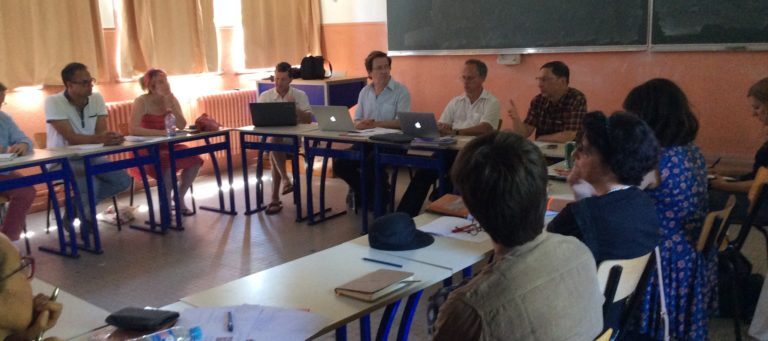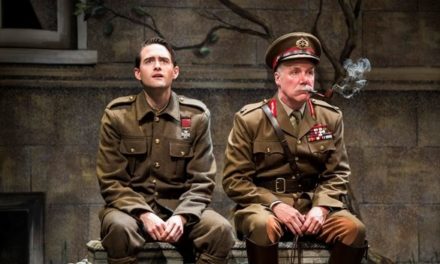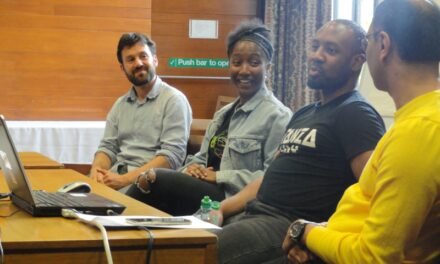IRET days in Avignon
Biannual event since 2015 bringing together IRET researchers, doctoral students, and associate members around shows chosen within the official festival and analyzed in seminars, study days, and public artistic meetings, in partnership with the festival’s public relations department and the National Center for Dramatic Writings in Villeneuve-lès-Avignon. A highlight for the cohesion and disciplinary identity of the Unit.
Theater studies and visual studies.
Little, if not represented frontally at the national level, the problem crosses on the other hand several structuring axes of our team (Poetics of modern and contemporary drama/Theory and history of theater/Research on theater reviews/Scenes and otherness). The new five-year contract will therefore be an opportunity to cross-examine the question of the theatrical gaze, the way in which it is informed by other modern or contemporary practices, and the way in which, in return, it participates in the evolution of others artistic practices; and beyond that, certain social, political and even technological practices. The question of the “submerged gaze,” the subject of a conference scheduled for 2018, will make it possible to make the link between the previous contract and the new contract.
Partnerships: Théâtre de l’Odéon, Maison Heine, National School of Theater Arts and Techniques, CEREG (EA 4223), “Passages XX-XXI” (Lyon 2).
Jazz aesthetics: the stage and the images. Open window on performing arts research and resolutely transdisciplinary, these international meetings bring together researchers and artists from all walks of life who approach jazz as an aesthetic and a philosophy. They are organized around conferences, scientific communications, screenings, artistic performances and round tables. To follow past editions: Esthetiquesjazz.tumblr.com
The Naked Body – Nudity in the Performing Arts.
The objective of this program is to question the nudity of bodies on stage, by not limiting the reflection to the contemporary period, but by opening it to previous scenic practices, and by leading it both from the point of view of the show only of its eventual textual material. The studies will therefore be  spectacular and/or dramaturgical, contemporary, and/or historical. They will thus be able to engage all IRET researchers, as well as other researchers from complementary institutions and disciplines. This will include studying how nudity – even on the contemporary stage – is a scenic construction (make-up, tattooing, elements of “costume,” space, lights, gestures …), different according to the periods and the spectacular genres, and also to put this scenic perception in perspective with the socio-cultural context of the show; that is, that is to say with the perception of the “nude” in the extra-theatrical world, the articulation or the confrontation of these two looks that can pose political and anthropological questions on the stakes of representation. The program proceeds by seminar and study days or colloquium; a device that allows us to examine the semiotic ambiguity of the “expeausition” between eroticism and sensuality, pornography and violence, nudity, and otherness. The first international conference is organized in Coimbra, Portugal on June 20, 21, and 22, 2018 in partnership with the University of Lisbon and the University of Coimbra: “The naked body in the performing arts: transhistoric and critical perspectives.”
spectacular and/or dramaturgical, contemporary, and/or historical. They will thus be able to engage all IRET researchers, as well as other researchers from complementary institutions and disciplines. This will include studying how nudity – even on the contemporary stage – is a scenic construction (make-up, tattooing, elements of “costume,” space, lights, gestures …), different according to the periods and the spectacular genres, and also to put this scenic perception in perspective with the socio-cultural context of the show; that is, that is to say with the perception of the “nude” in the extra-theatrical world, the articulation or the confrontation of these two looks that can pose political and anthropological questions on the stakes of representation. The program proceeds by seminar and study days or colloquium; a device that allows us to examine the semiotic ambiguity of the “expeausition” between eroticism and sensuality, pornography and violence, nudity, and otherness. The first international conference is organized in Coimbra, Portugal on June 20, 21, and 22, 2018 in partnership with the University of Lisbon and the University of Coimbra: “The naked body in the performing arts: transhistoric and critical perspectives.”
lecorvin.net. Digital and encyclopedic dictionary of theater. Coordination: Alexandra Moreira Da Silva and Pierre Letessier
The first stake is, according to the wish of Michel Corvin himself, to give a digital version to the Encyclopedic Dictionary of the theater across the world. Coordinated by Michel Corvin when he was a professor at the Institute of Theatrical Studies, and published Editions Bordas in 1991 then republished in 2008. Beyond this continued enterprise, it will be a question of affirming through this one the historical commitment of the researchers of IRET, of the Institute of Theatrical Studies, and of the Gaston Baty Theater in the disciplinary construction of theatrical studies. It will also be necessary to think about the specificity of the digital medium to allow the updating and development of an online dictionary.
Inspired by the model of general encyclopedias today online (Universalis, Britannica), the principle of multiple entries will make it possible, from the basic article consulted, to access additional articles and bibliographies (specialized articles, extended bibliographies, reference to recent theses, etc.). The encyclopedic objective of the dictionary is to provide historical and aesthetic information on theater that is as meaningful as possible on theater practitioners (actors, authors, directors, playwrights, etc.) but also on broader fields: architecture, scenography, costume, scenic techniques, legislation, institutions, cultural areas, genres and forms, concepts of aesthetics, dramatic vocabulary and language … and to provide this information to all readers likely to be interested (cultured amateurs, teachers in schools, colleges and high school students theater professionals, researchers). The objective of this digital dictionary will therefore be threefold: Develop a collective research work on the dictionary entries deemed to be the most problematic or the least provided, Ensure a valuation of scientific knowledge, by allowing wide dissemination of scientific work / Allow the democratization of knowledge, by providing free access to knowledge validated by specialists.
Around a steering committee made up of members of IRET and coordinator of the scientific work, the company will involve a multiple partnerships: the IET and the Gaston Baty Theater, the editions Les Solitaires intempestifs, holders of the rights to the printed dictionary ( which they will give free of charge to the project partners), the Regional School of Actors of Cannes (ERAC), depositary of a Michel Corvin archive collection, not to mention the ongoing solicitation of the BNF and National Education. IRET intends to provide this project with the means to match its ambitions and challenges by submitting in 2018 a draft ANR program (corpus and databases).
Topo logiques – Places and memory of the performing arts
Coordination: Catherine Treilhou-Balaudé, Aurélie Mouton-Rezzouk and Céline Hersant
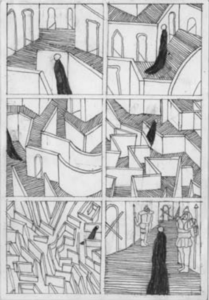 The question of place and theatrical space has always been present in IRET’s issues, as evidenced by IRET’s partnership with the Scenography Research Group (GRES), located in Louvain (UCL) and bringing together a set of universities and art schools (ESA) in Belgium. The scenography is no longer understood as the mimetic implementation of the drama but as the place of an autonomous poetics.
The question of place and theatrical space has always been present in IRET’s issues, as evidenced by IRET’s partnership with the Scenography Research Group (GRES), located in Louvain (UCL) and bringing together a set of universities and art schools (ESA) in Belgium. The scenography is no longer understood as the mimetic implementation of the drama but as the place of an autonomous poetics.
The Topo logiques program intends to give these questions a new dimension and a new direction. It is a matter of considering the places where we play and those where the live performance is played and extended, in the diversity of its forms and genres: spaces and temporalities, upstream and downstream, at the margins, below and beyond, of the scene proper. The investigation, therefore, encompasses the spectacular event (what takes place) beyond the scenic event. The institutions (places of programming, spaces, and actors of creation), spaces(territories, locations, apprehended by architecture and scenography); the public (in their interactions with cultural action), the communication places, speeches, and transmission of live performances (from school to the press, blogs, …); the memory finally (personal, collective or heritage) and traces of the spectacular event and the process of its creation.
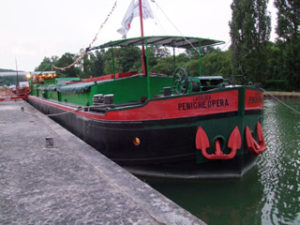 Inaugurated in September 2017, the Topo logiques seminar aims to test the “place” as an operative concept in the field of Theatrical Studies, open to related disciplinary fields of the arts and the media (Cinema and audiovisual, cultural mediation and museology, communication sciences). Over the same period, the Topo logic program intends to be deployed on the following axes:
Inaugurated in September 2017, the Topo logiques seminar aims to test the “place” as an operative concept in the field of Theatrical Studies, open to related disciplinary fields of the arts and the media (Cinema and audiovisual, cultural mediation and museology, communication sciences). Over the same period, the Topo logic program intends to be deployed on the following axes:
A special case study: La Péniche Opéra . At the initiative of C. Treilhou-Balaudé, IRET is a member of a research program in partnership with IReMUS (U Paris4) and CRIHAM (PRES Poitiers-Limoges). Since 1998, a crossroads of artistic practices and multiple forms of performing arts (music and sound, opera, theater, circus arts), the Péniche Opéra calls for multidisciplinary skills: musicology and theatrical studies, political science, sociology, the economics of Culture. This will involve evaluating the role of cultural policies, analyzing aesthetic models implemented (both in the creation and in the revival of the dramatic and lyrical repertoire), and to analyze from a socio-economic perspective the modes of production and reception experienced by the Péniche Opéra throughout its history. Study days, supervision of work (master’s and doctorate), seminars will allow the publication of one or two summary volumes (deadline: 2020): “The Opera : a privileged player in the cultural policy of the 1980s” and “The Péniche O péra: an institution at the service of creation and restitution ”. On the occasion of the fortieth anniversary of the Péniche Opéra (2022), a conference and an exhibition are planned.
Stage, museum, library: These places where we think. Research in collaboration with CERLIS (UMR 8070, U P3- UP5), LLA CREATIS (U Toulouse), the Culture and Communication team (UMR 8562, U Avignon). A cycle of study days and conferences, opened in May 2017, will allow over four years to examine the way in which specific places – the stage, the museum space, and the library – generate and model thought. It is a question of testing a hypothesis: that these “places” (spaces circumscribed in a territory / architecture / device – scenographic, expographic, classificatory – / institutional and professional systems defined by specific missions and values / works and objects presented) determine their own ways of exercising thought, both on the side of those who “work” there (exhibitors / designers / artists / programmers…) and on the side of the public (visitors / spectators / users); that they can, jointly, be conceived and interpreted as spaces of the practice of the thought – were it simply a potentiality, which would actualize itself in a fleeting, summary way -, even of the philosophical exercise, in its most open to the practice of contemplative, reflexive or critical thinking. The program will result in the publication of a collective work (end of 2020). in its most open sense of the practice of contemplative, reflexive, or critical thought. The program will result in the publication of a collective work (end of 2020). in its most open sense of the practice of contemplative, reflexive, or critical thought. The program will result in the publication of a collective work (end of 2020).
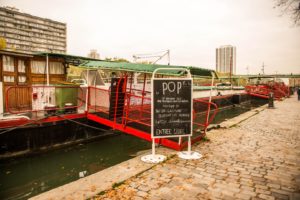
Territory and places of live performance, in partnership with Gilles Demonet, (UMR IReMuS) and Edith Fagnoni, from ENEC (Espace Nature et Culture, UMR 8185- U. Paris-Sorbonne). Calendar: 2019-2022. In this case, it will be a question of combining approaches to establish a French typology (expandable internationally) of performing arts venues according to their location, their architecture, their programming, and their artistic positioning, in order to highlight their geo- and socio-political characteristics. A major objective of this necessarily multidisciplinary program would be to provide political decision-makers, in particular in the form of a database, with an analytical model for the establishment of new live performance venues depending on the territories and their sociological identity, and culture and their economy.
All of these axes are envisaged in collaboration with cultural institutions and places of conservation, on the basis of existing partnerships or under development: Department of Performing Arts and Music of the BNF, Historical Library of the City de Paris, Association de la Régie théâtrale, Center national du costume de scène. The collaboration with the Cadagne museum and the International Puppet Institute makes it possible to envisage, in the second part of the five-year contract, the implementation of a Lines de divide – Contours des arts de la marionnette project whose research will focus on the genesis, mutations, and functions of the lexicon and of the concepts which make it possible to describe, define and think about the puppet arts, in conjunction with the labeling process in progress. The study will simultaneously focus on the corpora, collections, places, and professional practices of puppetry.
Theater and photography
IUF Program (A. Rykner) : Theater and photography in France and in the European context. Intermediate exchanges, frictions, transfers, and devices (19th-20th centuries). Focused on the question of “ photographique” at the theater (theater photography, but also relations between dramaturgy, staging, and photography), this program will draw in particular on the rich photographic collection of the Gaston Baty Theater, and on that of the major Parisian institutions. It proposes to question the links between theater and photography, from a strong theoretical perspective, while relying on analyzes of works and iconographic documents that are sometimes poorly known; it will mainly focus on a French corpus from the 19th and early 20th centuries, taking into account the context of European exchanges at the time, but also the strong link between this period and the period
photographique” at the theater (theater photography, but also relations between dramaturgy, staging, and photography), this program will draw in particular on the rich photographic collection of the Gaston Baty Theater, and on that of the major Parisian institutions. It proposes to question the links between theater and photography, from a strong theoretical perspective, while relying on analyzes of works and iconographic documents that are sometimes poorly known; it will mainly focus on a French corpus from the 19th and early 20th centuries, taking into account the context of European exchanges at the time, but also the strong link between this period and the period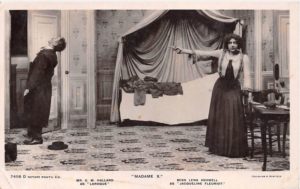 contemporary (through their relationship to the body and the image). The comings and goings, the dialogue, even the transfers between the two forms of art and media will be considered starting from an interrogation of one by on the practice of the photographic portrait of actor, on the other hand on the way whose dramatic writing and scenic writing bring into play models and an imagination that one might have thought to be purely photographic (the work of Meyerhold like that of Brecht or even that of Artaud, in particular, have thus already been approached from such an
contemporary (through their relationship to the body and the image). The comings and goings, the dialogue, even the transfers between the two forms of art and media will be considered starting from an interrogation of one by on the practice of the photographic portrait of actor, on the other hand on the way whose dramatic writing and scenic writing bring into play models and an imagination that one might have thought to be purely photographic (the work of Meyerhold like that of Brecht or even that of Artaud, in particular, have thus already been approached from such an
angle, in the first prefiguration of this program). In addition to the realization of two works, including one in its own name and a collective, and the organization of at least one international conference during the term of the contract, it also aims to allow the organization and to contribute to the scientific curatorial office of an exhibition of works and documents from the funds of one or more major theater photographers of the turn of the 19th and 20th centuries, having been able to contribute in particular to feeding the iconography of a major review like Le Théâtre, created in 1898, and the first of its kind to be based entirely on photographic resources. Partnerships: BNF, Musée d’Orsay, Historical Library of the City of Paris, Musée Goupil (Bordeaux).
Scenes, screens, media
FEDERATOR RESEARCH PROGRAM During this contract, IRET has initiated a process of reflection with the research units in cinema (IRCAV) and in communication (IRMECCEN), units with which the sharing of problems and scientific actions have already been hired within the Arts & Media Doctoral School (in particular during the Doctoral School Universities – 4 editions since 2008, most recently Valencia, 2016). The objective is to identify the converging research and the interests shared by the three units, while preserving their autonomy and their specificity, a request for funding from a unifying research program Scenes, Screens, Mediahas been filed with the Research Commission with a view to the next contract. Among the planned actions: the setting up of a joint seminar for doctoral students from the three Units and the biennial organization of study days on common themes but tackled in disciplinary complementarity: the themes of the “document”, of the “sterilization” of the spectacle ”, and the epistemology of visual studies constitute the first selection.
This article was originally posted at http://capitalcriticscircle.com/ and has been reposted with permission. To read the original article, click here.
This post was written by the author in their personal capacity.The opinions expressed in this article are the author’s own and do not reflect the view of The Theatre Times, their staff or collaborators.
This post was written by Capital Critics Circle .
The views expressed here belong to the author and do not necessarily reflect our views and opinions.

